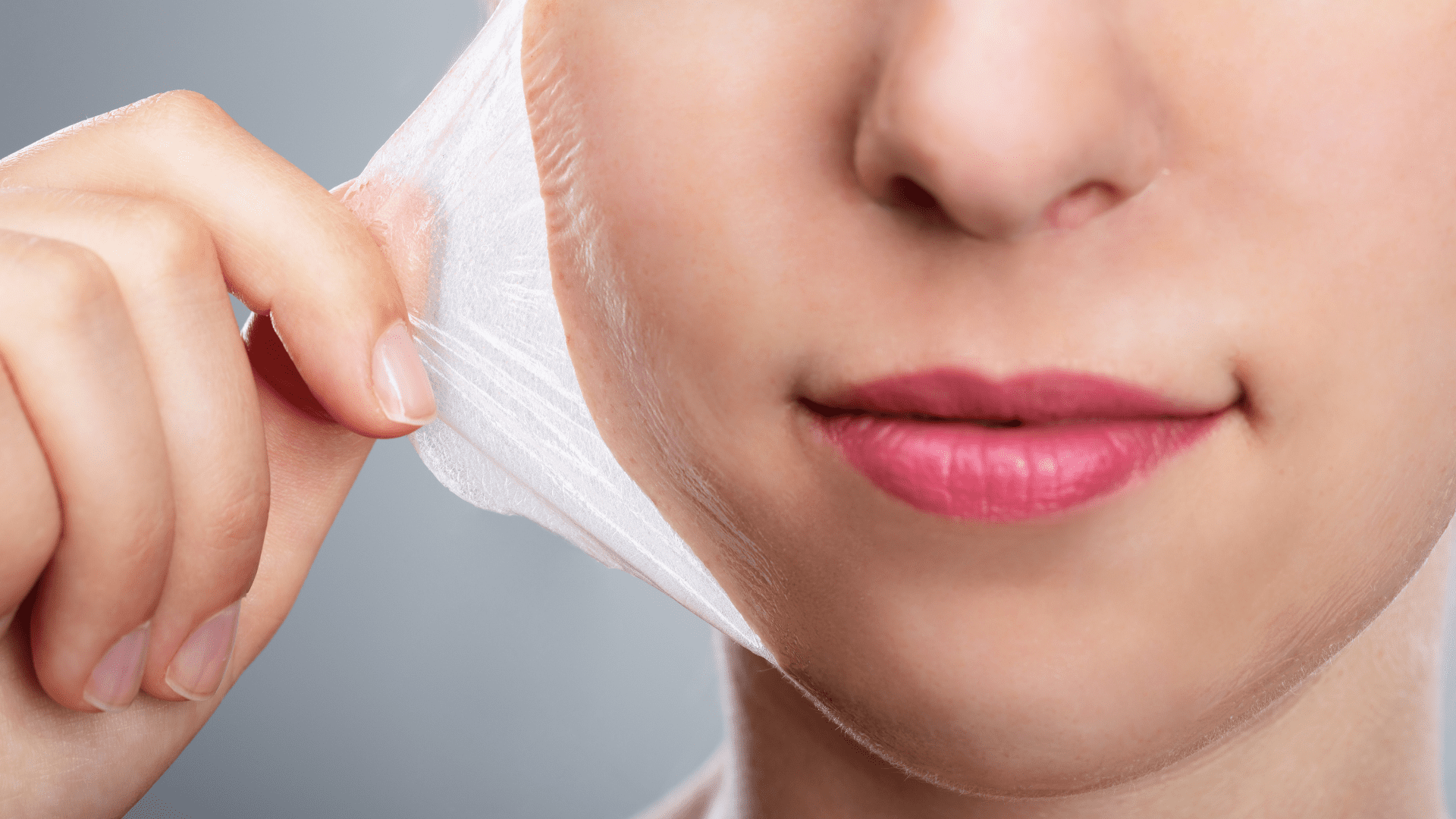A chemical peel is a restorative cosmetic procedure that can help reduce the signs of aging on your face. During a chemical peel, a dermatologist applies a Benefits of a chemical peel Treatment to your skin, which peels away damaged skin cells, allowing healthy skin to grow in their place. This treatment may help improve common skin concerns such as:
- wrinkles
- hyperpigmentation
- acne
- uneven skin texture
However, the exact results will depend on factors like the severity of your skin issues and the type of peel you receive. In this article, we’ll take a closer look at the different types of chemical peels benefits, and what to expect during recovery.
What to Know About Different Types of Chemical Peels
Your dermatologist can work with you to help determine whether a light, medium, or deep chemical peel is best for your skin and the concerns you’re looking to treat.
Light Chemical Peel
A light chemical peel, also known as a superficial peel, will lightly exfoliate your skin. It only removes the epidermis, the topmost layer of your skin. A light chemical peel is typically used for:
- fine wrinkles
- uneven skin tone
- acne
- dry skin
This treatment uses mild chemical agents, making it safe to get light chemical peels every 2 to 5 weeks.
Medium Chemical Peel
A medium chemical peel is stronger than a light peel. It removes both the epidermis and the top layer of your dermis, which lies beneath the epidermis. A medium peel is generally used for:
- wrinkles
- uneven skin tone
- acne scars
You may need several treatments to achieve your desired results.
Deep Chemical Peel
A deep chemical peel removes the epidermis, along with the upper and middle layers of your dermis. It uses very strong chemicals, so a local anesthetic is typically required to prevent pain and discomfort. A deep chemical peel is ideal for treating:
- deeper wrinkles
- severe scars
- precancerous skin patches
The effects of a deep chemical peel can last for up to 10 years, and only one treatment is needed.
What Are the Benefits of a Chemical Peel?
Chemical peels can improve many skin issues. Let’s look at some of the most common concerns that chemical peels may help address:
Acne
Acne is a common inflammatory skin condition often treated with topical products or oral medication, but chemical peels can also be beneficial. The procedure helps:
- break down comedones (plugged hair follicles)
- reduce oil production
- kill bacteria
- decrease inflammation
- increase absorption of topical treatments
Light and medium chemical peels are usually effective for improving acne.
Acne Scars
As acne heals, the skin creates new collagen fibers to repair lesions caused by inflamed skin. This can lead to hypertrophic scars (bumpy and raised) or atrophic scars (depressions in the skin). A chemical peel exfoliates the top skin layer, removing excess collagen. Medium chemical peels are typically recommended for acne scars.
Rosacea
Rosacea is an inflammatory skin condition that causes redness, swelling, and red bumps. If it also causes acne-like breakouts, it’s referred to as acne rosacea. A chemical peel can help relieve these symptoms, typically for mild to moderate rosacea.
Aging Skin
Chemical peels may reduce signs of aging, such as:
- wrinkles
- fine lines
- age spots
- uneven skin tone
- roughness
- dryness
- liver spots
After a chemical peel, new skin triggers the production of collagen and elastin, making your skin more supple and strong. This helps reduce the appearance of wrinkles and improves skin texture by reducing roughness and dryness.
Hyperpigmentation
In addition to acne scars and age spots, chemical peels can improve other types of hyperpigmentation, such as:
- uneven skin tone
- melasma
- freckles
- surgical scars
- injury scars
- sun damage discoloration
Dullness
If you have a dull complexion, chemical peels may benefit you. The treatment resurfaces the skin, helping your complexion look brighter and healthier.
Precancerous Growths
Actinic keratoses are rough skin patches caused by sun exposure and are considered precancerous growths because they can potentially develop into skin cancer. A deep chemical peel can remove these growths and reduce the risk of skin cancer.
Who’s a Good Candidate for a Chemical Peel?
Not everyone is a good candidate for a chemical peel. You might be suitable if you have:
- generally healthy skin
- mild scarring
- superficial wrinkles
- a lighter complexion
Avoid chemical peels if you:
- have sagging skin
- have deep wrinkles or scars
- frequently develop cold sores
- have a history of abnormal skin scarring
- have psoriasis or atopic dermatitis
- have a darker skin tone (higher risk of hyperpigmentation)
- have recently taken oral acne treatment
- are pregnant or breastfeeding
- have a compromised immune system
- have undergone radiation therapy or recent surgery
- have heart disease (for deep chemical peels)
What’s the Recovery Process Like?
As your skin heals, you may need to apply a protective ointment and wear sunscreen to protect your skin. Recovery varies by peel type. Here’s a look at what recovery may involve:
Light Chemical Peel
After a light peel, you may experience mild irritation and dryness. You can usually wear makeup the next day and resume your regular skincare routine. Full recovery typically takes 1 to 7 days.
Medium Chemical Peel
The most common side effects of a medium peel include:
- swelling
- redness
- stinging
In most cases, you can wear makeup within 5 to 7 days. Recovery typically takes 7 to 14 days, though some redness may persist for months.
Deep Chemical Peel
The most common side effects of a deep peel include:
- crusting
- swelling
- severe redness
Swelling can last for 14 days, and redness may persist for up to 3 months. It may take up to 14 days for the skin to grow back, during which time you’ll need to wear a surgical dressing and take pain medication. Makeup can typically be worn after 14 days.
Rare but severe side effects include:
- infection
- bruising
- delayed wound healing
- reactivation of herpes simplex virus
Conclusion
A chemical peel is a cosmetic treatment that removes the top layer of your skin, which can help minimize wrinkles, dullness, hyperpigmentation, and scarring. It may also help treat skin disorders like acne and rosacea. However, a chemical peel can’t treat deep wrinkles and scarring, nor will it tighten loose skin or reverse sun damage. To determine whether a chemical peel is right for you, consult your healthcare provider.

